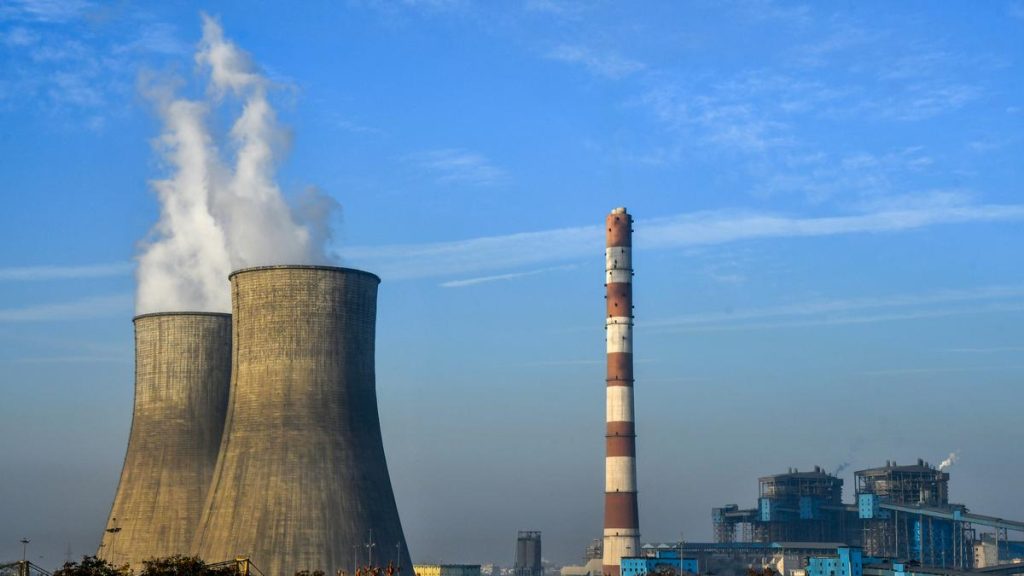
‘Indian coal generally has a lower sulphur content than other coal, which should have made it easier for Indian thermal plants to meet the SO2 emission norms’
| Photo Credit: The Hindu
On December 30, 2024, India’s Ministry of Environment, Forest and Climate Change (MoEFCC) issued a notification amending the Environment Protection Rules by pushing back the deadline for thermal plants to comply with sulphur dioxide (SO2) emission norms by three years without any reasons being given. As it happens, the existing deadline for about 20 gigawatts (GW) of thermal plants, all located in close proximity to densely populated areas, was December 31, 2024. This is the latest instance in a nearly decade-long saga that fans of Franz Kafka would find appealing.
The MoEFCC revised the emission norms for Indian thermal plants in December 2015 after public consultations, and all thermal plants were expected to comply with them by December 2017 despite it being a tight deadline.
This notification tightened the prevalent norms for particulate matter emissions and introduced norms for other emissions, including SO2, for the first time. These norms were understood to be broadly on a par with existing practices in countries such as Australia, China and the United States.
The morphing of a debate
Indian coal generally has a lower sulphur content than other coal, which should have made it easier for Indian thermal plants to meet the SO2 emission norms. But rather than focusing on the best ways to meet the norms — given Indian coal’s characteristics — the debate morphed into the challenges around implementing the flue gas desulphurisation (FGD) technology for desulphurisation of high-sulphur coal. Despite the norms never mandating FGDs, the discussion became one about issues such as the scheduling of FGD installations given their long gestation periods and the likely costs of installing them.
In parallel, a different discourse questioning the SO2 emission norms themselves also took shape, often driven by different arms of the government. The Central Electricity Authority (CEA) published papers in 2020 and 2021, questioning the need for uniform norms across the country and proposing that its country-wide implementation be phased out till 2035. The CEA also commissioned a study from IIT Delhi in 2022 which concluded that the installation of FGDs does provide air quality benefits but argued for extending the timelines due to issues such as FGDs being expensive, their supply chain being inadequate, and their operation leading to increased coal consumption (and hence greenhouse gas emissions).
In 2024, NITI Aayog commissioned the CSIR-National Environmental Engineering Research Institute to conduct a study on this. This study concluded that SO2 emission norms are not important to achieve good ambient air quality in India, and instead the focus should be on particulate emissions. There was also one strand of debate about secondary aerosol formation from SO2 emissions as the reason to have norms for it even though Indian coal is relatively low sulphur. Thus, rather than debating these issues and building a consensus before notifying the first set of norms, it continues robustly nearly a decade after their notification.
Different deadlines
In the midst of these debates, the MoEFCC diluted some norms and also extended, multiple times, the deadlines for compliance, with the notification of December 2024 being the fourth in the series. As a result, there are different deadlines for thermal plants in different locations and for different types of emissions, with SO2 emission deadlines being well after the deadline for other emissions.
Indeed, the final deadline for compliance with other emissions, which include particulate matter emissions that are considered important by all government agencies, was December 31, 2024 with many plants having to comply from December 31 of 2022 and 2023. But it is not clear if various pollution control boards are verifying adherence to even these norms as there is no public source easily available that provides this information.
Consumer pays
Given the evolving timelines in the various notifications by the MoEFCC, many thermal plants have already tendered contracts to install FGDs — though not at a pace required to meet their deadlines before the latest notification. This was enabled by electricity regulators introducing regulations to pass on the costs of installing FGDs and other pollution control equipment to electricity consumers, irrespective of whether emission norms are met (so that it is not a burden on thermal plants).
As a result, though the earliest deadline for meeting SO2 emission norms is now December 31, 2027, 22 GW of thermal plants have already installed FGDs. Additionally, 102 GW (nearly 50% of installed thermal capacity) is in advanced stages of setting up FGDs.
Given the new timelines for compliance, the chances are that plants with FGDs will not run them since this would increase the cost of generation and hence push them down the preferred list of generators. Thus, electricity consumers are likely to be paying for installed but unused equipment, even as citizens living around thermal plants do not get the benefit of cleaner air for at least three more years, if not longer.
Perhaps this modern variant of Birbal’s khichdi will get cooked one day, but the institutional, environmental, health and financial costs of doing so are likely to end up being high. And, unlike the original fable, it is not even clear whether the right lessons would be learnt from this saga.
Ashok Sreenivas and Maria Chirayil are with the Prayas (Energy Group)
Published – February 07, 2025 12:08 am IST








